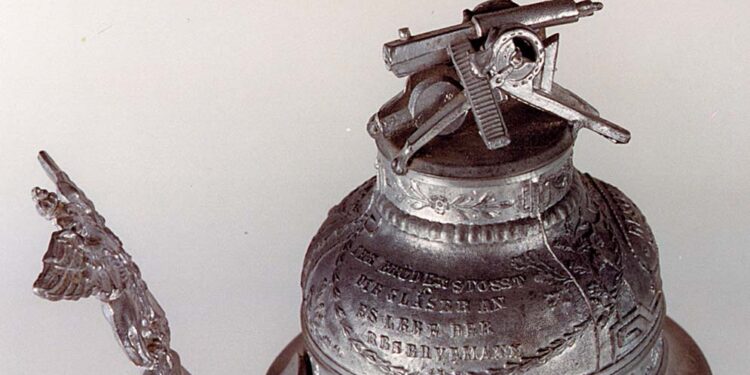By Robert G. Segel
Collecting military steins is a vast and rewarding avocation in and of itself. With a rich history spanning several centuries of military motifs
decorated on beer steins there is a lot of room for specialization. For the purposes of this article we will take a look at steins with machine gun
images as artwork as they relate to commemorate service with machine gun units.
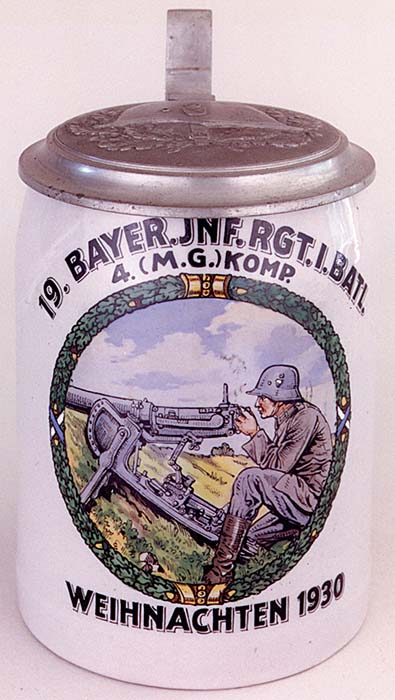

Beer steins with lids were mandated by law in Germany in the 16th century as one of many sanitary precautions aimed against diseases and plagues. Steins were to be made of materials such as glass, porcelain, stoneware or metal rather than porous earthenware or wood and lids were made of tin or pewter. Because the steins were now more costly to produce and thus expensive to own, they became deserving of intricate decorative artwork usually portraying something of a personal nature of the owner or commemorating a special event to which the owner was associated.
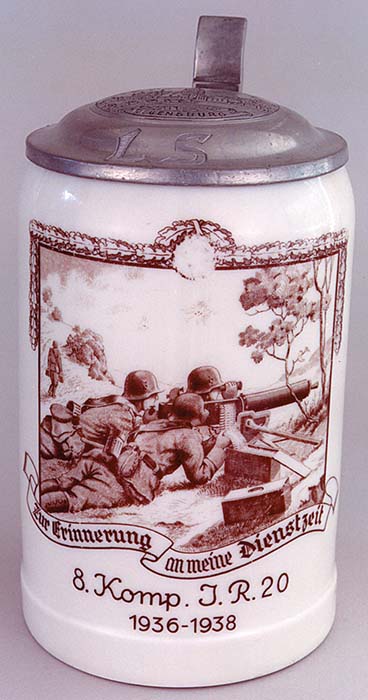
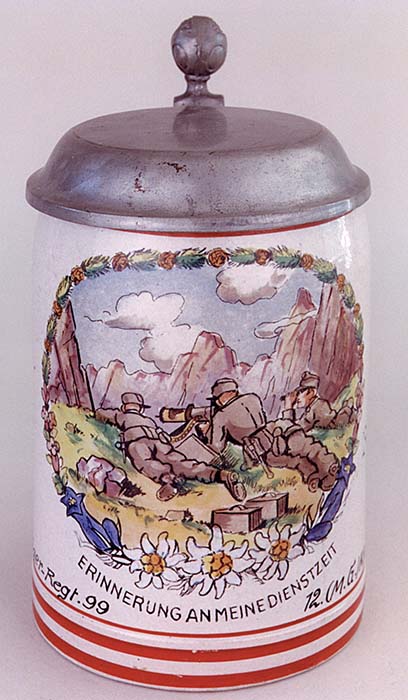
German military steins were not an item given or issued by the military. They were privately purchased by the soldier or reservist, or given as a
gift, to commemorate a soldier’s time in service, usually upon discharge from active service to the reserves. The stein could be personalized with their name, rank, time in service, branch of service, and a roster of comrades in arms from his unit and typically had “Erinnerung an Meine
Dienstzeit” (In Remembrance of My Service Time) printed on the stein. Commemorative German steins were almost always the purview of the enlisted soldier. Very few were made for career NCOs and almost none for officers.
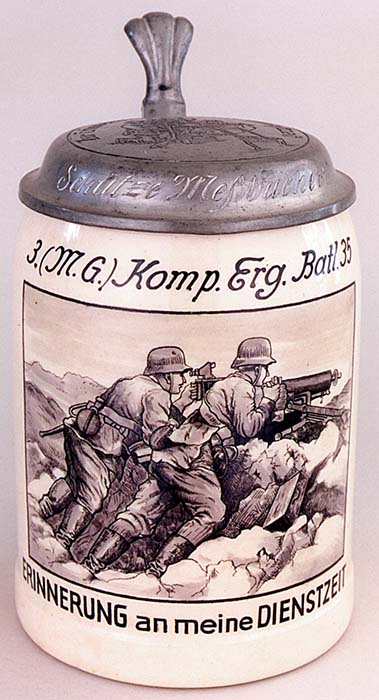
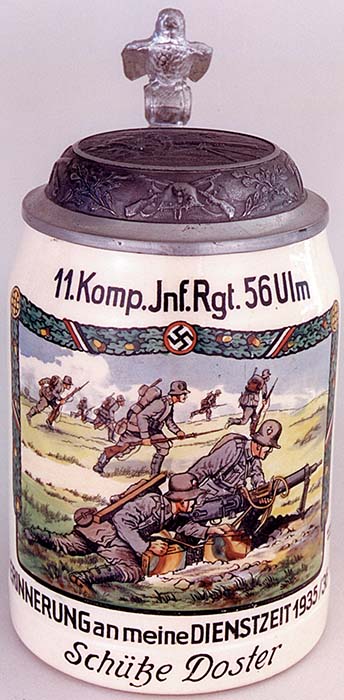
The large Prussian regimental steins from 1888 to 1914 were beautifully made being about 11 inches tall holding approximately one half liter of liquid and generally made of fine porcelain. They were decorated in very colorful enameling with a pewter lid that often contained a finial on top that related to the branch of service they were in. These steins also generally had a translucent lithopane scene in their base. This means that at first glance the bottom of the inside of the stein appears to be just a white bottom. But when held up to a light source a scene (typically of a soldier and his girlfriend) can be seen through the bottom. These tall porcelain steins were very expensive and with the outbreak of World War I this style of stein was discontinued.
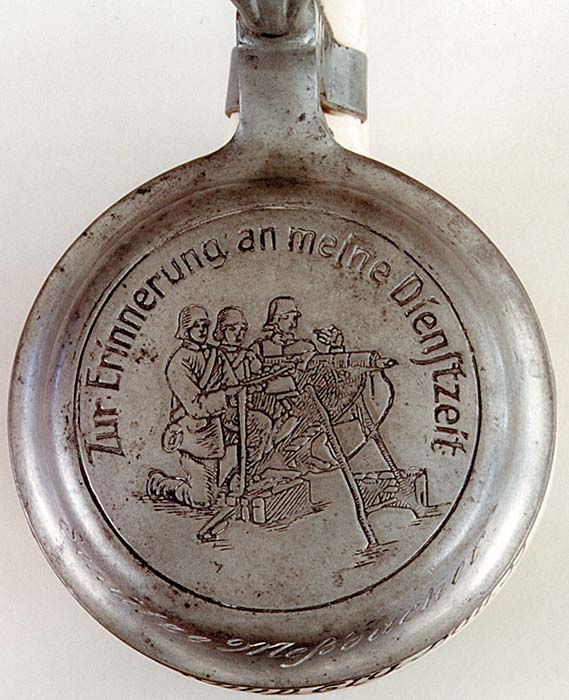

World War I era steins were smaller in overall size though still held a half liter of liquid. They were simpler in construction, not as ornate and
generally made of glazed stoneware. Their decorations, instead of being enameled, were print-under-glaze decals though they could still be
personalized with name, rank, period of service, etc. This style of stein continued through the inter-war Reichswehr period (1919-1935) and into the Third Reich era. However, stein production started to be drastically reduced in 1939 as World War II was gearing up and actually very few 1940s steins were made and even fewer survived as they were systematically destroyed. Many of the Nazi era steins that do survive today that had the swastika as part of its decoration has had the swastika removed as part of the de-nazification program after the war.
Rare, interesting, historic and colorful, every classic machine gunner should be drinking his beer out of one of these steins. (After they are done for the day on the range, of course!)


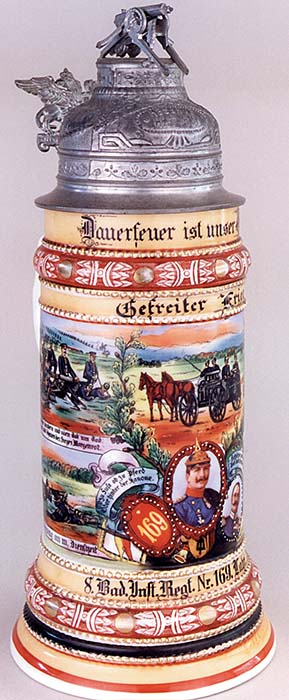
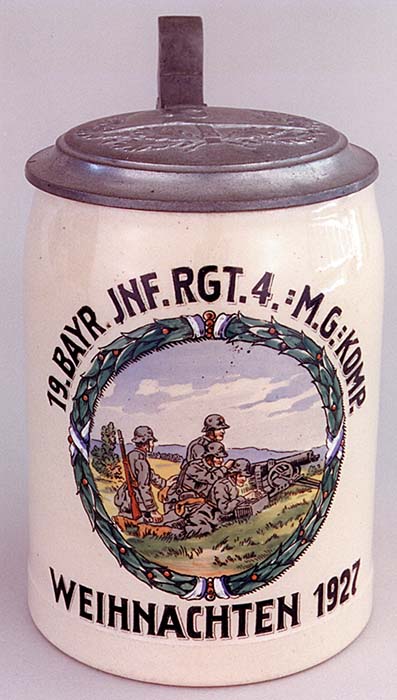


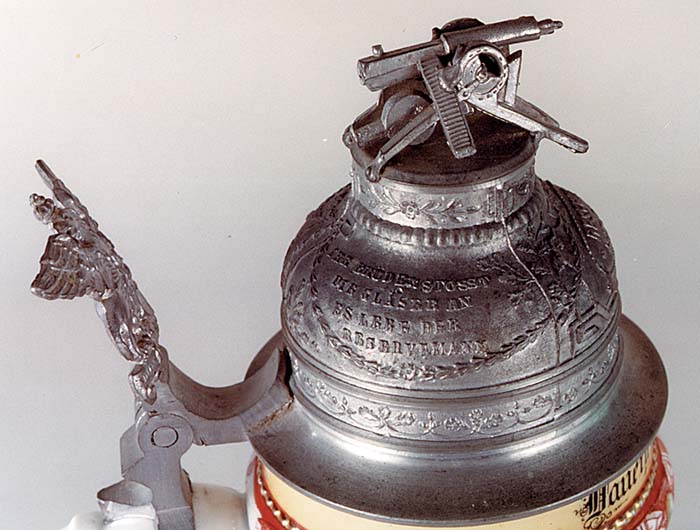
| This article first appeared in Small Arms Review V2N5 (February 1999) |



